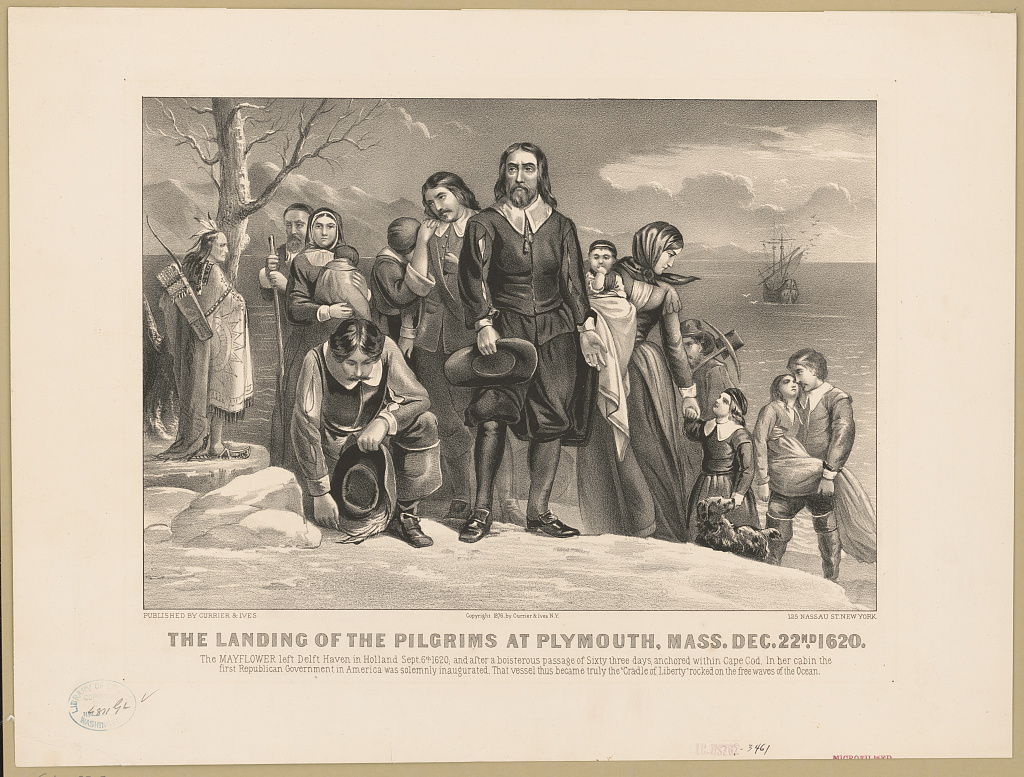Not All Black and White: Puritan Clothing
Puritan Clothing
Currier and Ives; Library of Congress Prints and Photographs Division
We are approaching a monumental 400th anniversary: the
landing of the Mayflower Pilgrims in November, 1620. They were followed by the Puritan settlements
beginning in 1621 and through the Great Migration years, all nearing the 400
year anniversary.
Maybe it is due to our childhood education that the
month of November brings up visions of the first Thanksgiving. The Mayflower Pilgrims
are some of the most iconic figures in American history. One glimpse of their
black clothes and buckled hats and you automatically know who they are.
But those images are not completely accurate. The Pilgrims and Puritans are often
represented as wearing black or grey clothing but in reality they seldom wore
black, preferring to wear what they called “sadd” colors. These included green, rust, orange, purple,
brown and other colors. In the 17th
century black was the color of formal garments and not considered appropriate
for the simple life style preferred by Puritans.
Clothes were made from linen, wool and leather and colored using dyes made from roots, berries and leaves. “The ‘sadd’ colors mentioned in the records of the time were so called because of a dye process that dulled or ‘saddened’ the intensity of the color.”
The inventory of William Bradford’s possessions, in his last will and testament in 1657, states that he owned many colorful items of clothing:
- A suit with silver buttons & a coat valued at £4
- A cloak faced with taffety [taffeta] and lined with bays valued at £3
- A “sod” or “sad” colored cloth suit valued at £2
- A Turkey grogram suit and cloak valued at £2
- A pair of black breeches and a red waistcoat valued at 15 shillings
- A lead-colored cloth suit with silver buttons valued at £2
- A “sod” or “sad” colored short coat and an old serge suit valued at £1 and 10 shillings
- A light-colored coat valued at 16 shillings
- An old green gown valued at £1
- A light-colored cloak valued at £1 and 15 shillings
- An old violet cloak valued at £1 and 5 shillings
- Two hats, a black one and a colored one, valued at £1 and 10 shillings
The Puritans used clothing as a sign of social
status—black was appropriate for the leaders of the colony, including the
clergy, who often added lace and other indicators of privilege. People of lower social classes were forbidden
from wearing clothing inappropriate for their station.
Governor Edward Winslow, circa 1651
How did we get the iconic images of stern black
wardrobes? The paintings and portraits
of the period usually show a dignitary in black clothing, but portraits were
expensive; we’re only seeing the upper echelon of society. Later paintings often show people in various
colored clothing.
So, for your Thanksgiving displays and pageants and
your 400th anniversary celebrations, break out the “sadd”
colors. You’ll be right in style with
your Pilgrim and Puritan ancestors.
The Dyers of London, Boston and Newport, Christy K.
Robinson, 2013
British Colonial America: People and Perspectives, edited by John A. Grigg, 2008, ABC-CLIO, Inc.
Library of
Congress Prints and Photographs Division Washington, D.C. 20540 USA
http://hdl.loc.gov/loc.pnp/pp.print
MaryLynn Strickland








Comments
Post a Comment